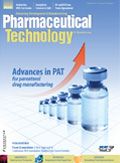Outsourcing Nontraditional Protein Expression Systems
Growth is seen in outsourcing of insect- and plant-cell-based bioproduction expression systems.
The biopharmaceutical industry continues to increase outsourcing less common, more complex processes as companies seek strategic advantage by leveraging external resources. Until recently, outsourcing has focused primarily on traditional expression systems (mammalian and microbial) versus less common systems (e.g., yeast, plant cell, and insect cell) more likely to be retained in-house.

Eric Langer
This year, there are signs that outsourcing of plant- and insect-cell culture-based processes are beginning to expand. Preliminary data from BioPlan Associates' 10th Annual Report and Survey of Biopharmaceutical Manufacturers indicate that only 50% of plant-cell users are performing this operation fully in-house, with the other half outsourcing some elements of bioprocessing to some degree. The data represent a shift from prior years, when up to 90% of the industry kept their processes fully in-house.
The BioPlan data for insect-cell systems shows a similar trend. In past years, between 65% and 100% of respondents did all their insect-based production in-house, but BioPlan's preliminary data from 2013 show a reduction to 60% of respondents doing all insect-cell-based production in house; this is the lowest point in more than six years. For plant-cell and insect-cell systems, the smaller number of facilities using these systems and the fact that the data still being preliminary make it too soon to declare a definitive shift, but it is interesting to see that the trends projected by some industry analysts are reflected in the preliminary findings. Meanwhile, the proportion of respondents outsourcing traditional expression systems remains relatively steady as follows (2013 results are preliminary data):
- Mammalian cell-culture systems: In 2013, 50% of respondents (47% in 2012 and 45% in 2011) indicated that they outsourced no production while 31.6% (47% in 2012, 44.6% in 2011, 30.3% in 2010, and 29% in 2009) outsourced up to half of production.
- Microbial fermentation: In 2013, 45% (50% in 2012 and 43.8% in 2011) of respondent outsourced no production. Thirty-five percent (44.% in 2012 and 41.6% in 2011) outsourced up to half of production, and 20% outsourced more than half.
- Yeast systems: In 2013, 66.7% of respondents (62.5% in 2012, and 59.1% in 2011) outsourced no production; in 2013, 22.2% of respondents (31.3% in 2012, 27.2% in 2011, 32.1% in 2010, and 14% in 2009) outsourced up to half of production.
- Plant-cell systems: 50% outsourced no production in 2013 (89% in 2012, 58% in 2011, and 75% in 2010).
- Insect-cell systems: 60% outsourced no production in 2013 (83% in 2012, 65% in 2011, 100% in 2010, and 82% in 2009).
Future outsourcing
When the BioPlan survey separately asked respondents about the percentage of their production that they expect to outsource in five years (i.e., by 2018), similar trends hold true. Future outsourcing of plant-and insect-cell systems appears to be rising while outsourcing of traditional systems remains steady, suggesting a relatively stable production environment. The preliminary data from 2013 show:
- Mammalian cell-culture systems: 62.5% of respondents in 2013 (58.2% in 2012 and 63.5% in 2011) indicated they expect to outsource at least some of their production in the next five years.
- Microbial fermentation: In 2013, 68.2% of respondents (72.2% in 2012 and 59.6% in 2011) plan to outsource some production by 2018.
- Yeast systems: 40% of respondents in 2013 (45% in 2012 and 52.2% in 2011) believe that at least some of their production will be outsourced in the next five years.
- Insect-cell systems: 42.9% of respondents in 2013 (26.7% in 2012) plan to outsource some production by 2018.
- Plant-cells systems: 40% of respondents in 2013 (25% in 2012) expect to outsource some production in the next five years.
Capacity utilization trends
Although outsourcing of traditional expression systems has remained fairly steady in BioPlan's preliminary data, capacity utilization may be trending upward after several years of decline. Capacity utilization is important for ensuring productivity and cost-effective operations. Lower utilization equates to more idle capacity. A certain amount of flexible capacity is needed to ensure availability during stress operations. Also, CMOs require open capacity to ensure they are not turning away potential clients. Conversely, too little capacity can lead to production and delivery problems. Ten years ago, capacity utilization was a more prominent issue. Today, increased yield of titers, improved bioproduction modeling, the use of disposables, and better planning have lifted most capacity problems.
Manufacturers, however, continue to work toward optimized upstream and downstream process operations. In upstream bioprocessing, mammalian cell-culture capacity in 2013 is averaging 65.4% of total capacity, which would be its highest level since 2006, according to BioPlan's preliminary data. Capacity use has stabilized at roughly 62% during the past six years after declining from 76.4% in 2004. Meanwhile, the rebound is even greater for microbial fermentation. After decreasing steadily from 71% in 2004 to 49.5% in 2012, capacity utilization appears to have increased to 62% this year. For yeast culture, the initial data showing 48.4% capacity utilization represent an uptick from a 2012 level of 35.7%, but is more in keeping with prior years, which ranged from 44.9% to 46.8% between 2006 and 2011. Capacity utilization for plant- and insect-cell systems remains steady comparative to 2012, but noting again the potential for "noisy" data due to the small number of respondents using these systems.
For essentially all expression systems, there appears to be underutilized capacity, which is preferable for companies when compared to a shortage of capacity. Despite utilization percentages having decreased in recent years, new capacity and higher yields were established during this period, so overall biomanufacturing levels (i.e., output) have risen considerably.
Conclusion
Despite steady utilization rates in insect- and plant-cell expression systems, outsourcing appears to be rising. For traditional mammalian and microbial expression systems, capacity utilization rates are trending upward while outsourcing has remained flatter. On the surface, capacity utilization and outsourcing would appear to be interconnected-when capacity is scarce, outsourcing becomes an option. For many bioprocessing technologies, however, selection factors may be more associated with the availability of technical competence among outsourcing suppliers and CMOs rather than simply access to available production capacity.
Eric Langer is president of BioPlan Associates, tel. 301.921.5979, elanger@bioplanassociates.com, and a periodic contributor to Outsourcing Outlook.

Drug Solutions Podcast: A Closer Look at mRNA in Oncology and Vaccines
April 30th 2024In this episode fo the Drug Solutions Podcast, etherna’s vice-president of Technology and Innovation, Stefaan De Koker, discusses the merits and challenges of using mRNA as the foundation for therapeutics in oncology as well as for vaccines.
Pharmaceutical Tariffs Are Imminent: How Industry is Bracing for Impact
April 16th 2025On April 14, 2025, the Trump Administration launched a national security-driven investigation into pharmaceuticals, a move that will likely result in tariffs being placed on pharmaceutical drugs, ingredients, and other components that are imported from outside of the United States.
Drug Solutions Podcast: Applying Appropriate Analytics to Drug Development
March 26th 2024In this episode of the Drug Solutions Podcast, Jan Bekker, Vice President of Business Development, Commercial and Technical Operations at BioCina, discusses the latest analytical tools and their applications in the drug development market.